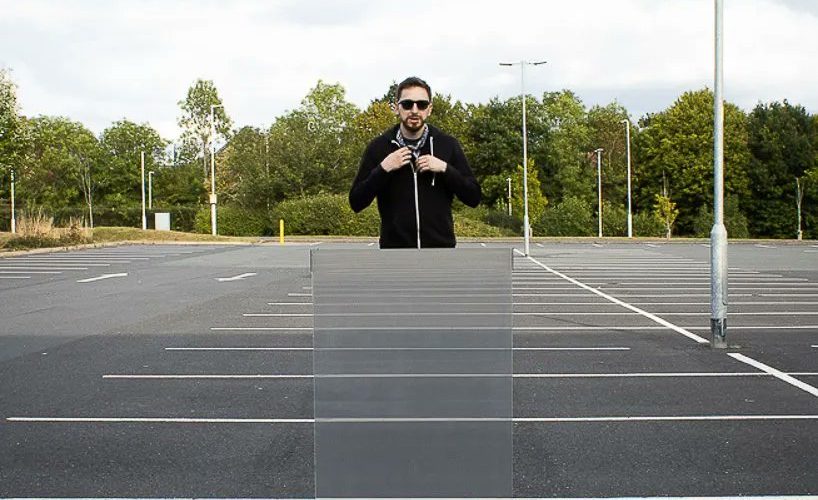Science fiction becomes reality
Who has never wanted to be invisible? It’s one of the most useful superpowers; you can spy on others, and nobody can find you. Now, something similar is really possible.
A London company developed the technology for an invisibility shield that really works and allows you to hide who stands behind this sort of transparent panel while showing the background behind the person. This is part of a Kickstarter campaign you can support to get your own invisibility shield.
According to the company, a precision-built lens array on each shield directs much of the light reflected from the subject away from the viewer, sending it sideways across the shield’s face to the left and right. The vertically oriented strip of light reflected by the standing or crouching person becomes very diffuse when spread out horizontally on passing through the back of the shield since the lenses in this array are vertically oriented. The light reflected from the background, on the other hand, is much brighter and wider, so much more of it is refracted both across the shield and towards the observer when it passes through the back of the shield. This backdrop light appears to be spread horizontally across the front face of the object from the observer’s point of view, where the subject would normally be seen from the observer’s perspective.

After experimenting with different lens shapes, angles, and depths, as well as different ways to mount them on a scaffold, the team came up with a solution that doesn’t even require toxic resins, which are commonly used in such structures.
Much of the light entering the back of the shield is refracted to a focal point and then spread out to the sides from there, as shown below with one of the shield’s lenses. The light is reflected internally rather than refracted out when the outer surface of the lens achieves a sufficiently shallow angle relative to the angle of the incoming light beam. It is then diffused, reflected, and refracted around and out of the lens, interacting with the lenses on both sides.

Extruding and then embossing a polymer to build sheets of elongated, convex lenses running in parallel produces the optical arrays they used to make the shields. The lenses on these sheets must have a precise shape and be made with extreme accuracy in order for them to manipulate light in the appropriate way to build effective invisibility shields.
According to the company’s Kickstarter page, the shield works best against homogeneous backgrounds like vegetation, grass, sand, and sky, but it will also work well against walls, painted lines, and rails.
The company sells these shields in different sizes: a full size that is about 3 x 2 feet and is large enough to hide a full-grown human or even two while sitting. The other one is around 12 x 8 inches in size. The larger one costs $394, while the smaller one costs around $65, which includes worldwide shipping.
In addition, the shield works entirely on optics, so there is no need for a power source, and it only weighs nine pounds, making it quite portable. The shield is composed of UV and temperature-resistant material that is used for external signage and is slightly over two inches thick.
The company also suggests recycling the entire assembly if, after a while, you are not going to use it anymore, just like the waste produced during its manufacture. The company has also partnered with logistic teams who work to reduce emissions while delivering products.
It’s hard to imagine how this kind of product may be used except for military purposes. Being invisible can be dangerous or favorable, depending on whether you are a victim or an attacker. If one day this technology could be applied to a sort of suit, people would be able to walk invisibly with ease, and you’d never know if someone was hiding in your room.
Source interestingengineering.com
